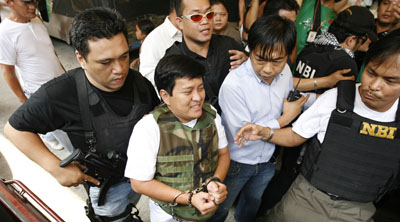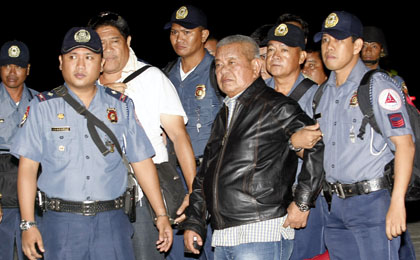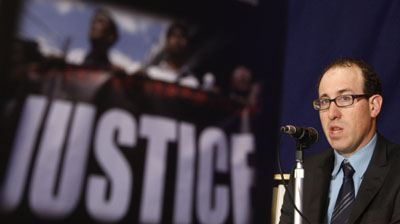
Justice takes twisting turns in Philippines massacre
An apparent injustice has been reversed—Philippines Justice Secretary Alberto Agra refiled murder charges against two key figures in the November 2009 mass killing of journalists and others in Maguindanao. On April 19, we filed an alert expressing our dismay that Agra had dropped murder charges against Zaldy Ampatuan, former governor of the Autonomous Region in Muslim Mindanao, and his uncle, Akmad…

Concern as some charges dropped in Philippines killings
New York, April 19, 2009—The Committee to Protect Journalists is dismayed by the Philippine government’s decision to drop murder charges against Zaldy Ampatuan, former governor of the Autonomous Region in Muslim Mindanao, and his uncle, Akmad Ampatuan, former mayor of Mamasapano on the southern island of Mindanao. The move, announced in Manila on Saturday, overruled the Quezon City…

Philippine high court spokesman: Death threats ‘funny’
Midas Marquez, spokesman for the Philippine Supreme Court, has told local reporters that he considers death threats sent anonymously by text message to journalist Marites Dañguilan Vitug to be “funny” and “ridiculous.” Marquez was asked to comment in his official role because the threats began shortly after the release of Vitug’s new book, Shadow of…
Philippine editor Vitug receives series of death threats
New York, March 23, 2010—The Philippine government must vigorously pursue its investigation into a series of death threats received by Marites Dañguilan Vitug, editor-in-chief of the online news outlet Newsbreak, the Committee to Protect Journalists said today.

Garcia-Esperat murder suspects back at work in Philippines
On the run for more than a calendar year from court-ordered arrest warrants, Osmeña Montañer and Estrella Sabay, the alleged masterminds in the 2005 murder of Philippine investigative journalist Marlene Garcia-Esperat, at left, are now out of hiding and back at work as senior Department of Agriculture finance officials, according to recent reports in the Philippine Daily Inquirer.
Doing the numbers on press freedom
On Tuesday, CPJ released its annual report, Attacks on the Press, with a global launch in six cities—Tokyo, New York, Brussels, Bogotá, Cairo, and Nairobi. We’ve noticed that different media reports, using our data, have cited slightly different numbers in regards to two key statics, the number of journalists killed and the number imprisoned in…

Citizen journalist helped report Philippine massacre
“The e-mail came in at 8.48 p.m.,” Philippine journalist Maria Ressa told a hushed audience at CPJ’s panel discussion, Press Freedom: On the Frontlines and Online, this morning at the Foreign Correspondents Club of Japan in Tokyo. She was describing how the first photo from the November massacre in Maguindanao province reached the mainstream Philippine…

Press freedom, new media in Tokyo
CPJ’s six-city launch of Attacks on the Press began today in Tokyo, where we hosted a panel discussion with Maria Ressa of ABS-CBN TV in the Philippines, Asahi Shimbun deputy foreign editor Nobuyoshi Sakajiri, NHK Middle East correspondent Nobuhisa Degawa, CPJ China expert Madeline Earp, and me.

Attacks on the Press 2009
A Worldwide Survey by the Committee to Protect Journalists Table of Contents Preface by Fareed Zakaria Introduction by Joel Simon Journalists Killed Journalists in Prison Regional Analyses AFRICA: In African hot spots, journalists forced into exile AMERICAS: In the Americas, Big Brother is watching reporters ASIA: As fighting surges, so does danger to press EUROPE…
Attacks on the Press 2009: Introduction
By Joel Simon Does “name and shame” still work in the Internet age? After all, the massacre of 31 journalists and media workers in the Philippines pushed the 2009 media death toll to the highest level ever recorded by CPJ. The number of journalists in prison also rose, fueled by the fierce crackdown in Iran.